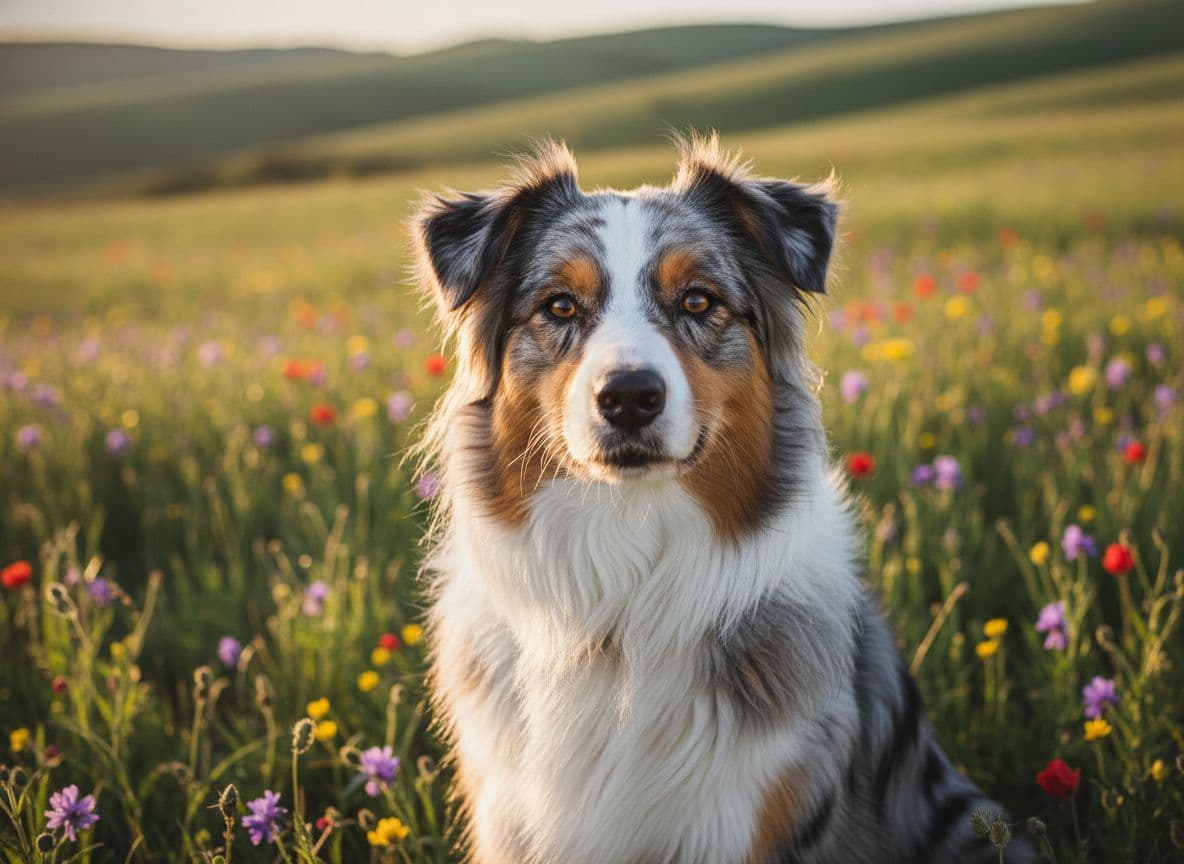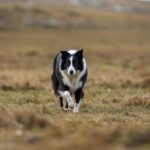Got an Aussie who never seems to run out of fuel? Australian Shepherds were bred to work, so their brains and bodies crave regular, purposeful activity.
The right walks keep joints strong, minds calm, and that famous wiggle-tail happy.
In this dog-friendly East Cornwall guide, you’ll learn how much exercise your dog really needs, what gear helps on our coastal path, and simple safety habits for lanes, moorland, and beaches in Cornwall.
We’ll share local tips for busy owners who want better dog walks without the stress.
If you’re new to the breed, this quick background on the Australian Shepherds breed helps explain their energy and focus.
Think clear routines, smart routes, and steady training. You’ll get advice that fits real life, from solo strolls to friendly group dog walks.
We’ll point you to helpful tools, a calm pace plan, and ways to prevent pulling, herding, and zoomies at the wrong time.
If you need support, a professional dog walker can keep progress going while you work.
Our local dog walking services cover daily dog walks, puppy walking services, and dog exercise services, with practical options for varied energy levels in Cornwall.
You can check our dog walking services and pricing if you’re comparing dog walking rates, looking for pet walking near me, or want a reliable dog walker for dog walking Cornwall.
How Much Exercise Do Australian Shepherds Really Need?
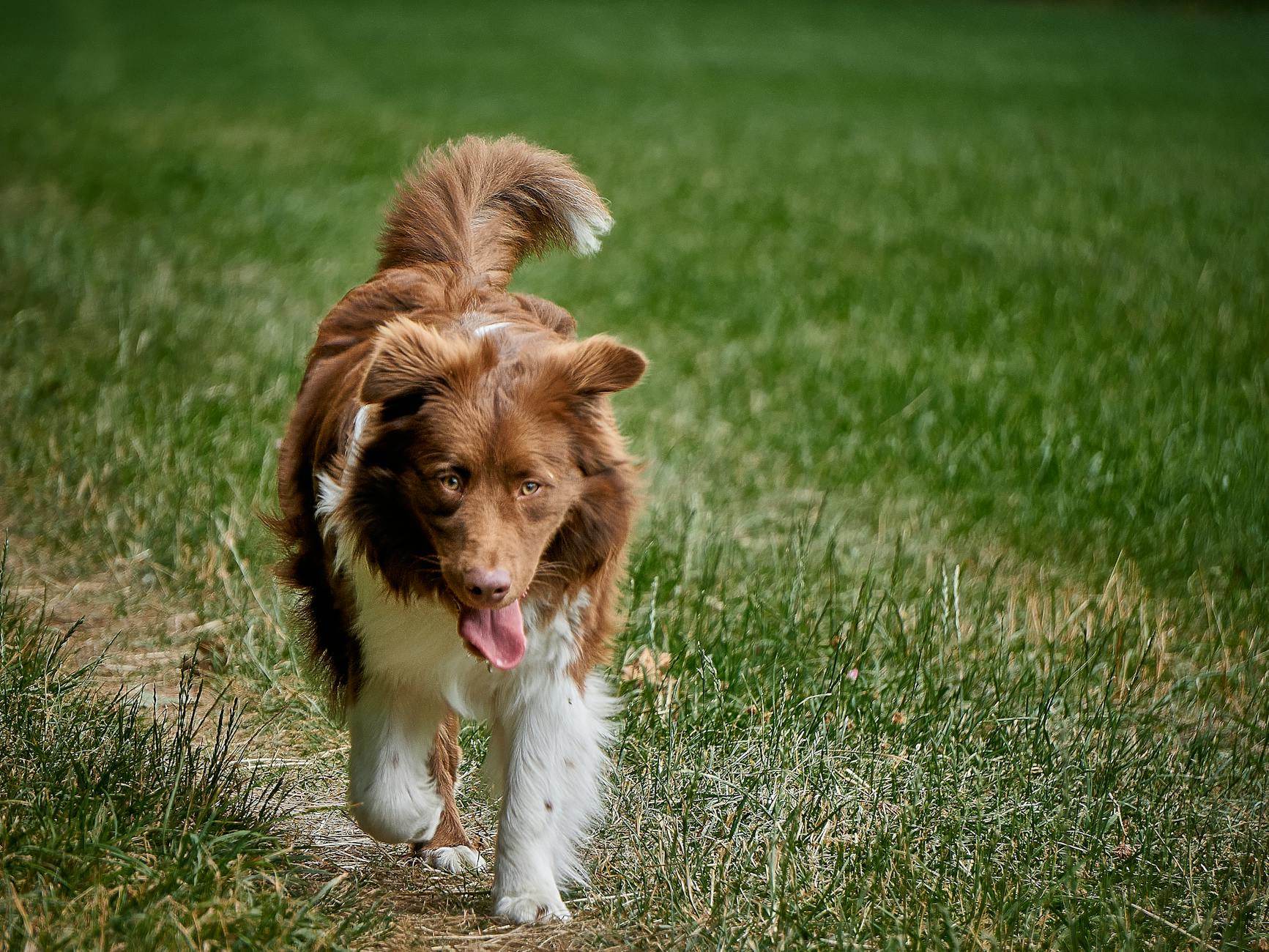
Australian Shepherds thrive on daily, structured movement and brain work. Most healthy adults need 90 to 120 minutes each day.
Split time between purposeful walks, training, and free play. Young dogs and seniors may need shorter, softer sessions.
Use your Aussie’s behavior as your guide. Energy levels, recovery time, and focus tell you if the plan fits.
For reference, guidance like this summary from Dogster suggests 1 to 2 hours a day, including varied activity and mental work.
See the full breakdown here: How Much Exercise Does an Australian Shepherd Need.
Keep sessions balanced. Mix steady walks with bursts of fetch or recall.
Add short training sets for impulse control and loose-lead manners. Reward good choices with food, play, or praise.
This is simple, effective positive reinforcement.
Signs Your Aussie Needs More Walks
Not sure if your plan is enough? Many Australian Shepherds “tell” you with body language and habits.
Look for these common signs at home and on walks.
- Restlessness and pacing: Your dog struggles to settle, even after a stroll.
- Chewing or shredding: Cushions, shoes, or mail become chew targets.
- Excessive barking: Sounds at small triggers or barks for attention.
- Nuisance herding: Chases kids, cars, or bikes, especially at doorways.
- Pulling and lunging: Hits the end of the lead and tunes you out.
- Zoomies at night: Bursts of energy when you are trying to relax.
- Poor focus: Sniffing turns into zoning out with no recall.
Small tweaks often fix these behaviors.
- Add one extra 20-minute walk on weekdays.
- Swap one flat route for a hill loop or moorland track.
- Include three, two-minute training breaks during your walk.
- Use scatter feeding in grass to slow the mind and body.
- Finish with five minutes of calm decompression sniffing.
Example: If your Aussie barks in the evening, try a morning brisk walk, a midday sniff session, and a shorter, puzzle-filled evening loop.
You may see calmer nap times and smoother bedtimes within a week.
Positive reinforcement speeds progress. Mark quiet moments and relaxed choices.
Pay with food, a quick tug game, or access to a sniff patch. Keep rewards frequent and tiny.
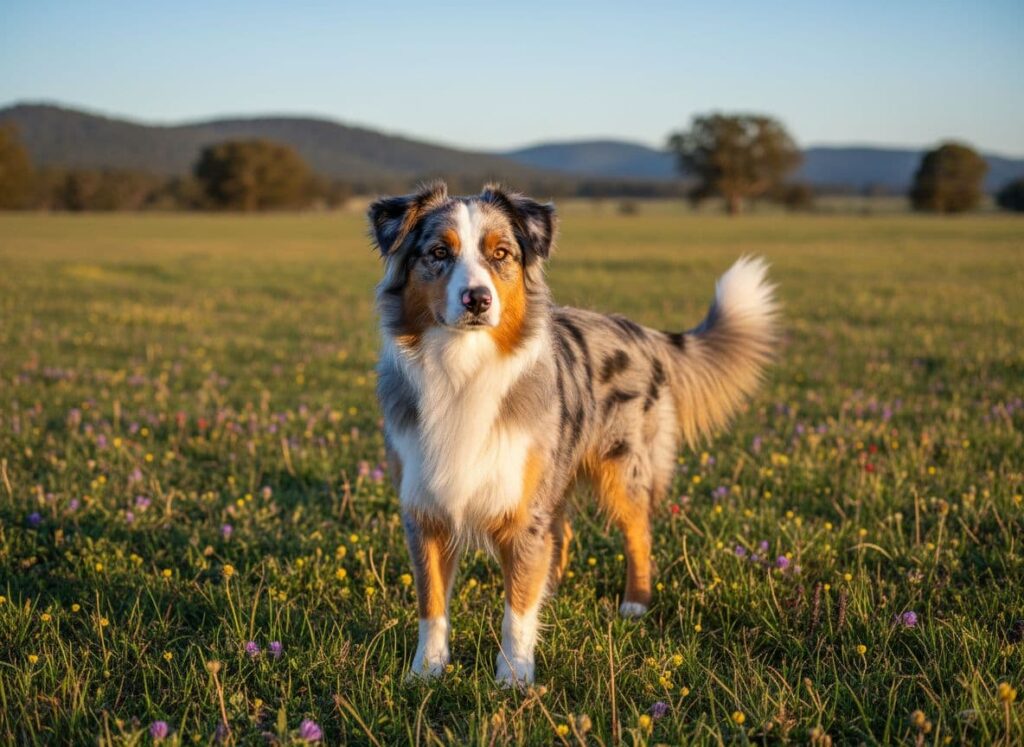
Fun Ways to Mix Up Your Walks
Variety helps your Aussie’s body and brain. It also keeps you both motivated.
Here are simple ideas that work well around Cornwall’s lanes, coast paths, and green spaces, including dog-friendly spots for coastal dog walks.
- Coast path intervals: Alternate two minutes brisk, two minutes easy. This builds fitness without long runs.
- Hill repeats on safe tracks: Walk up at pace, stroll down to recover.
- Sniffari walks: Let your Aussie lead for scent time. Aim for slow, thoughtful sniffing.
- Beach play on quiet tides: Practice recall with light fetch in soft sand at low tide.
- Urban skills loop: Practice sits at kerbs, loose-lead past shops, polite passes.
- Street “parkour”: Step on low walls, pause on benches, hop small logs. Keep it safe and low impact.
- Training micro-sessions: Five to ten reps of touch, heel, or stay during the route.
- Tug-and-train combos: Reward focus or recall with short games using tug toys. Tug builds drive, gives feedback, and strengthens your bond.
Social time matters too. Friendly group dog walks can improve manners and impulse control. Start with calm, matched dogs in dog-friendly areas around Cornwall.
Keep chats short and watch body language. Structured meet-ups teach your Aussie to make good choices around excitement.
For peaceful low-arousal activities, opt for quiet beach strolls in Cornwall to unwind.
Want a simple weekly template?
- Two days of longer variety walk/hike, 60 to 75 minutes, with training breaks.
- Two days of mixed pace, 45 minutes, with hill work or beach play.
- Two days of brain-first walks, 30 minutes, plus scent games at home.
- One easy recovery day, 20 to 30 minutes of gentle sniffing and stretching.
Keep notes on energy, appetite, and sleep. Adjust the plan if focus drops or your Aussie seems wired.
A steady routine, paired with fun novelty, gives Australian Shepherds what they crave: a job, a team, and a calm finish to the day.
Intelligence On Four Paws
Safety Tips for Walking Australian Shepherds in Any Weather
Cornwall’s coast paths are beautiful, but they ask for smart planning.
Australian Shepherds are athletic and quick, which is great until wind, rain, or tricky terrain raises the risk.
Use the tips below to keep walks safe, calm, and fun year-round.
This advice fits solo strolls, family hikes, and daily dog walks with a professional dog walker in Cornwall.
Handling Weather and Terrain Challenges
Coastal routes in Cornwall shift with the season, the tide, and the wind.
Your Aussie can handle it, but you need a plan before paws hit the path—especially with access restrictions in areas managed by the National Trust.
- Check the route first. Narrow cliff paths, steep steps, and loose shale need extra care, like in the quiet coves around Whitsand Bay. Keep your dog on a short line near edges and livestock. A Y-front harness helps with control on climbs and descents along these coastal paths.
- Watch the tide times for beach access. Wet sand can hide sharp shells and fishing debris on beaches like those in Holywell. Rinse paws after sea walks to remove salt and sand.
Season-by-season pointers that work on Cornish trails:
- Summer heat: Walk early or late, pick shade where you can, and add more water breaks—ideal for dog-friendly beaches in Newquay.
- Signs of overheating include heavy panting, slow responses, and glazed eyes. Learn the basics of heat stroke so you can act fast. Carry water and a folding bowl, and use short rest stops every 15 to 20 minutes.
- Check for facilities like a nearby car park to make access easier.
- Autumn wind and rain: Wet rock gets slick. Shorten your lead and slow your pace on descents.
- A lightweight, reflective coat improves visibility near lanes.
- If you want a full checklist on kit, timing, and drying off, see these tips on walking your dog in the rain.
- Winter cold: Keep sessions shorter if the wind bites. Road salt can sting pads. Dry feet after walks and use balm if cracks appear. Booties help on salted lanes.
- For simple, vet-backed advice, this Q&A on keeping dogs safe in snow and cold is clear and practical.
- Spring mud and livestock: Lambing fields are common, with restrictions in place around Penzance and Sennen. Keep your Aussie on a lead near sheep and give wide space to farm gates.
- Mud hides ruts and holes, so slow down and watch your footing on beaches.
Extra safety habits for coast and moor in Cornwall:
- Pack a basic first-aid kit and your phone. Save an emergency vet number.
- Use a bright ID tag and keep microchip details current. GPS collars add peace of mind on open moor.
- If you want tech that fits active dogs, see the Tractive GPS dog tracker overview.
- Plan your exit. Choose circular routes with bail-out points to avoid overexertion, and look for dog-friendly pubs along the way for a peaceful stop.
- If your Aussie flags, stop, offer water, and head back—perhaps grabbing a bite at a local pub in Sennen.
When in doubt, shorten the walk and add brain work at home. Australian Shepherds tire well with scent games, obedience sets, or play with tug toys, which supports safe, low-impact exercise.
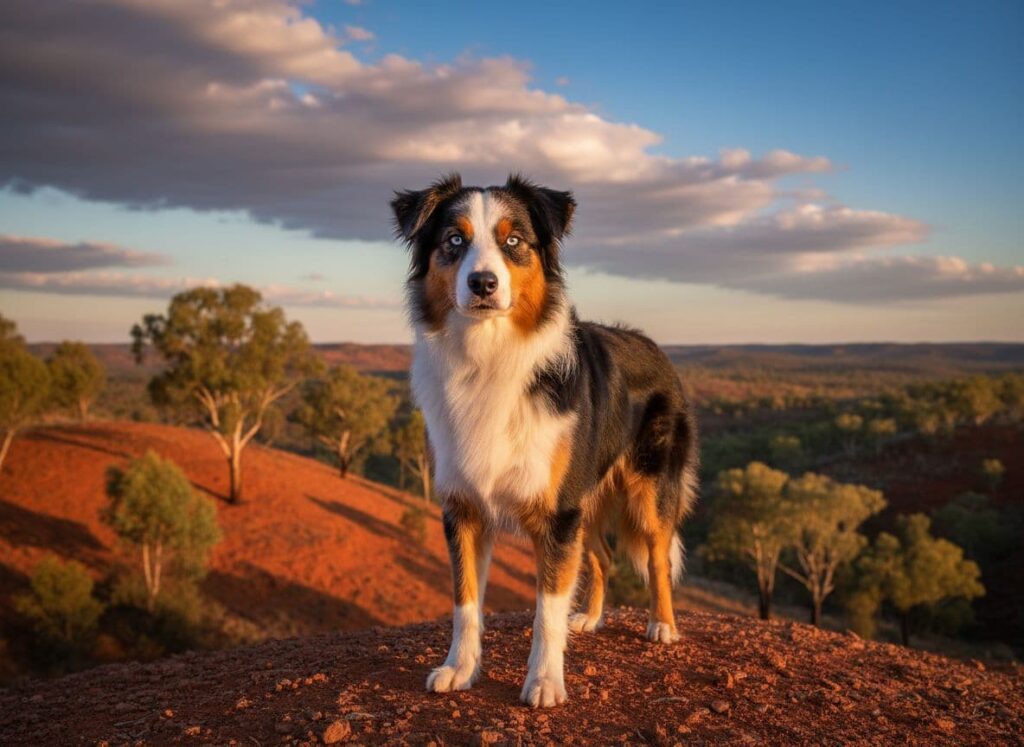
Training Basics to Keep Walks Enjoyable
Good manners protect your dog and reduce stress on busy paths in Cornwall.
Keep training light, fast, and fun, and you will feel the change within days—perfect for navigating beach access and seasonal restrictions.
Simple loose-lead routine:
- Fit a comfy harness and a 2 to 3-meter lead. Clip to the chest ring if your Aussie pulls.
- Start walking. The moment the lead slackens, mark with “yes,” then feed a tiny treat by your knee.
- If the lead tightens, stop. Wait for one step back or eye contact. Mark, reward, and walk again.
- Repeat in short sets. Ten good reps beat one long, messy session.
Add focus without nagging:
- Pattern games: Two steps, treat by your leg; two steps, treat again. This builds rhythm and rewards staying close.
- “Find it” breaks: Toss three treats into the grass when your dog checks in. Sniffing calms the brain and keeps arousal down.
- Auto-sit at kerbs: Pause, wait for a sit, then praise and cross. This turns safety into a habit.
Prevent pulling with smart rewards:
- Pay early and often when your Aussie is in the right spot.
- Use pace changes. Slow for ten steps, speed up for ten, then reward for matching you.
- Change direction if the lead hits full tension. No scolding, just a quiet reset.
Real-life example for coast paths: As you near a viewpoint, your dog may rush. Before the bend, cue a short “heel” for ten steps, pay at your knee, then release to sniff.
You control the approach, and your dog still enjoys the reward.
If you want a deeper dive into simple methods and timing, these Dog Training Secrets for Safer Walks collect quick wins you can use today: https://paw-tastic-walks.com/dog-training-secrets/.
Friendly reminder for busy weeks: book support. A reliable dog walker can keep skills sharp with daily dog walks, group dog walks, and puppy walking services in Cornwall.
Ask about dog walking rates, route choices, and how they reinforce your rules—especially for dog-friendly spots like beaches and pubs.
Good partners offer consistent local dog walking and practical dog exercise services, which keep your Australian Shepherd steady and happy on every outing.
Get this fabulous Aussie Shepherd Shirt & Much More from our store…
Conclusion
Australian Shepherds do best with a steady plan, clear cues, and safe routes in Cornwall. Aim for 90 to 120 minutes of daily movement, split into walk/hike sessions, training, and sniffing.
Pick a comfy harness, carry water, and check tides and weather before beach or cliff paths along safe coastal routes.
Keep leads short near livestock, and use recall early around corners. A little structure keeps energy focused and your dog relaxed at home.
For a quick tune-up on walk habits, these tips for better walks with your Australian Shepherd will help.
Start simple today. Set two short, purposeful walks to scenic coves, add three micro training stops, and finish with calm sniff time or a gentle swim.

If work is busy, book daily dog walks with a professional dog walker in East Cornwall.
Reliable dog walking services, group dog walks, and puppy walking services make progress easy and safe—especially at dog-friendly spots with convenient car park access.
Ask about dog exercise services, local dog walking routes in Cornwall, and how they support your rules while incorporating dog-friendly amenities like nearby facilities for a quick doggy paddle.
You can also compare dog walking rates, then choose the routine that fits your week, perhaps ending at a dog-friendly café for a post-swim treat or a welcoming pub.
Got questions on gear, recall, or safe pacing? Drop them below and we will help.
Your Aussie will thank you with soft eyes, a loose body, and better sleep during those enjoyable walk/hike outings to hidden coves.
Walk with intention, enjoy the view from a seaside car park, and keep the bond strong.
For general context on healthy routines, see this short overview of dog walking, and consider packing a few high-value rewards or engaging tug toys for focused fun on the trail.
Ready to explore more? Check out professional dog walking Cornwall options for tailored adventures.

